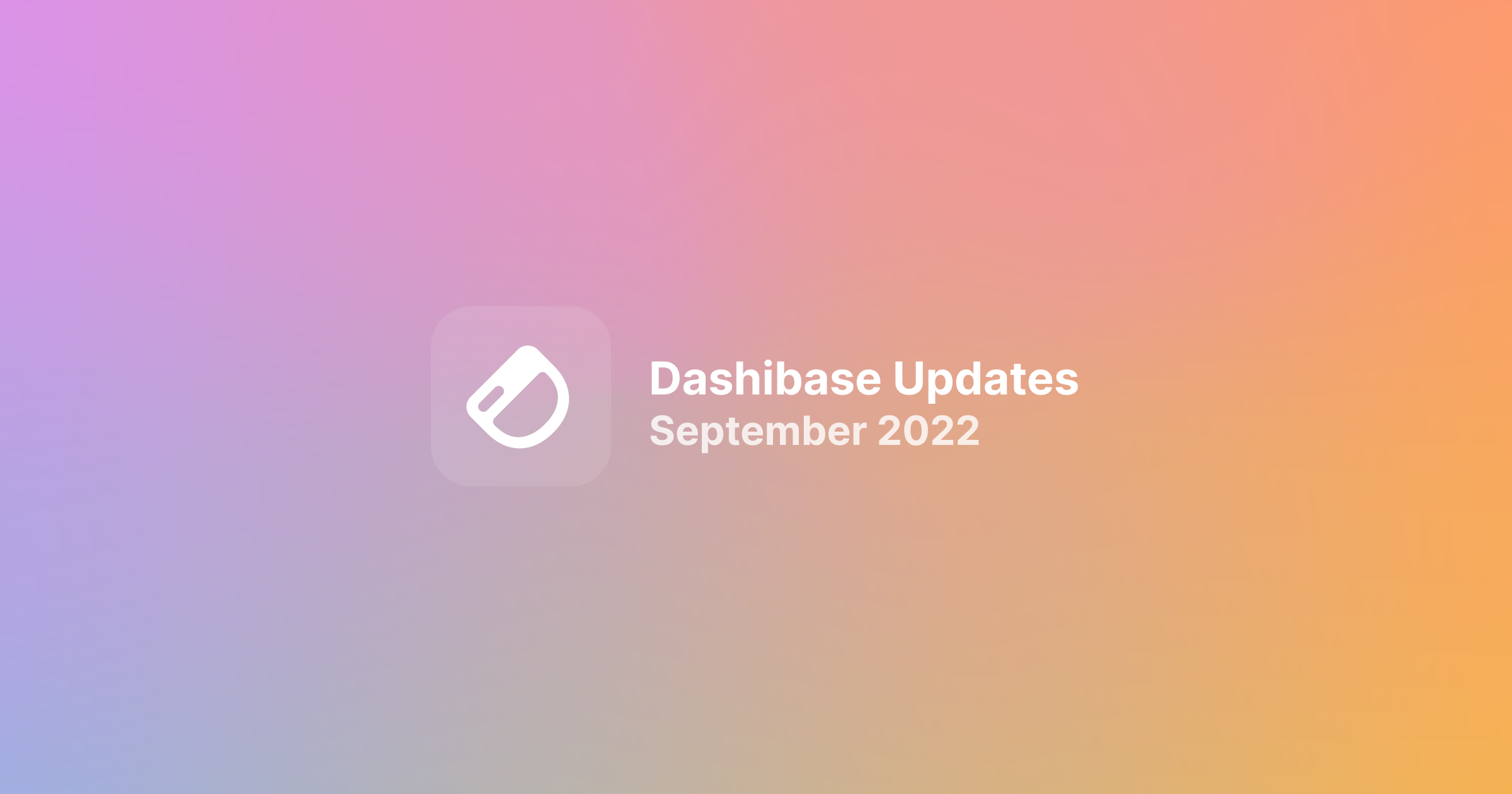Updates/October 7, 2022
Dashibase September 2022 Updates

Alfred Lua
Co-founder

I was recently reading Scott Belsky's book, The Messy Middle. In the chapter, Break the long game down into chapters, Scott described how cofounder and CEO of Pinterest Ben Silbermann "breaks up every period of his company into chapters, each with a beginning, goal, reflection period, and reward." For Pinterest, the chapters were growing a loyal base of users, becoming a mobile service, becoming a global service, then becoming a cash-flow positive service.
At Dashibase, we also view this journey as a long game with many chapters. And we are grateful to have you with us on this journey. In September, we came to the end of a chapter after testing our beta with the community and then opening it up to the public. We are embarking on a new chapter, which I will talk more about below.
1. No more waitlist, try Dashibase now

You can now sign up and try Dashibase all by yourself!
As developers ourselves, we know many developers love to try things themselves. It's not always fun to join a waitlist and jump on a call. But that was crucial for us to understand the challenges developers face while building internal tools and for us to build the early version of Dashibase. We appreciate your patience.
As a refresher:
Dashibase lets you build your internal workspace, using a Notion-like UI. A workspace where you can easily view and update your database data, write documentation, and more.
With Dashibase, you can create separate dashboards for various teams or purposes. For each dashboard, you can:
- Connect to your Postgres database
- Show and update your database data via a table GUI (no SQL)
- Get an automatically-generated page for each table item
- Add context and instructions alongside your tables
- Share dashboard access with your team
Here is an example of a customer support dashboard built with Dashibase, combining data from a database with documentation for the team:

There are also slash command and markdown formatting so that you can quickly build your dashboards without dragging and dropping components repeatedly.
This is just the beginning. We are now embarking on our next chapter, and we would love your help in shaping it.
2. Build custom blocks with us

One consistent feedback we hear from developers is that they want an escape hatch. In other words, the ability to add their own code—if necessary. They do not want to be limited by the product, especially if they have specific needs unique to them or their team.
But at the same time, developers love Dashibase for how much simpler and easier it is to use than coding from scratch or using alternatives. For example, you can build a CRUD table without SQL or JavaScript.
How can we let developers add custom code while keeping the Dashibase user experience simple and intuitive?
Here's what we have been thinking about:
- We could let developers code custom blocks and add them to Dashibase, which they can use in their dashboards. Our table block is an example of a custom block that we built ourselves.
- The developer experience has to be great. No coding in tiny boxes inside Dashibase. Developers should be able to code in their preferred IDE, use their favorite libraries, and easily deploy their custom blocks to Dashibase. There has to be great documentation but developers shouldn't need to spend days reading it to get started.
- If they want, they could share their custom blocks with other Dashibase users to help one another out. Credits would be given accordingly. There would be checks or open-source code to prevent malicious attacks.
- When the custom blocks are added to Dashibase, they should be intuitive to use, even for non-technical users.
It is an ambitious challenge, and that is what makes us excited about it.
We are still in the very early stages of this project, and a lot will change. This is why we want to involve you asap so that you can help shape it. If this excites you and you want to build custom blocks for your Dashibase dashboards, email me at alfred@dashibase.com or ping me in our Discord.
Other fun news

- We shipped a whole bunch of stuff in September: SSL connection, connection via Postgres restricted user, pagination. And many, many improvements and bug fixes. We even refactored our entire backend. Check out our weekly changelog for more details.
- We updated our Dashibase tutorial and included a video tutorial.
- NoCodeDevs featured Dashibase in their newsletter.
- It's ViteConf next week. Join us there!
Be part of the community
- Try Dashibase for free
- Join our Discord server
- Follow us on Twitter and LinkedIn
- Star our open-source repos (2.9k stars)
We are always interested in learning from developers and PMs who are building internal tools. If you are up for chatting, ping me on Discord or send me an email at alfred@dashibase.com. Thanks!